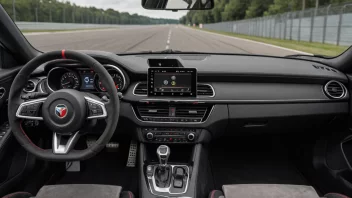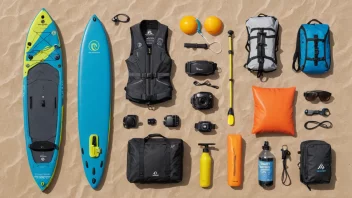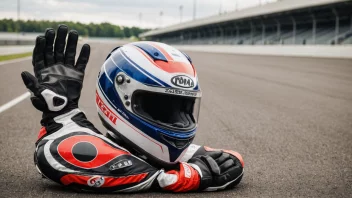Introduction
In the world of motorsports, every millisecond counts. Racers are constantly seeking ways to enhance their performance on the track, and one of the most effective methods is through video analysis. This article will guide you through the steps to effectively use video analysis to improve your racing technique, helping you identify areas for improvement and refine your skills.
Step 1: Gather Your Equipment
To perform effective video analysis, you'll need the right equipment:
- Camera: A high-definition camera or a smartphone with good video quality will suffice.
- Tripod: A sturdy tripod will keep your camera stable for clear footage.
- Video Editing Software: Software like Adobe Premiere Pro, Final Cut Pro, or even free options like iMovie can help analyze the footage.
- Data Logging Device (Optional): Devices that capture telemetry data can provide additional insights into your performance.
Step 2: Record Your Racing Sessions
Now that you have your equipment ready, it's time to record your racing sessions. Follow these tips for optimal results:
- Positioning: Set up your camera at a vantage point that captures the entire track or specific corners where you want to analyze your technique.
- Multiple Angles: If possible, use multiple cameras to capture different angles. This will give you a comprehensive view of your racing line and body position.
- Timing: Record multiple laps to get enough footage for analysis. Make sure to include different conditions (e.g., wet vs. dry) if possible.
Step 3: Review Your Footage
After recording, it's time to review your footage. Here’s how to do it effectively:
- Watch with Purpose: Focus on specific aspects of your racing technique, such as cornering, braking, and throttle application.
- Slow Motion: Use slow-motion playback to analyze your movements in detail. This can help identify any mistakes or areas that need improvement.
- Compare with Professionals: If possible, compare your footage with that of professional racers to see where you can improve.
Step 4: Take Notes and Identify Areas for Improvement
As you review your footage, take notes on your performance:
- Racing Lines: Are you taking optimal racing lines through corners?
- Body Position: Is your posture correct? Are you balanced in the seat?
- Braking Technique: Are you braking too early or too late?
- Throttle Control: Are you accelerating smoothly out of corners?
Step 5: Implement Changes in Your Training
Now that you have identified areas for improvement, it's time to implement changes:
- Set Goals: Establish specific, measurable goals based on your analysis. For example, aim to improve your cornering speed by a certain percentage.
- Practice Drills: Incorporate targeted drills into your training sessions that focus on the areas you've identified. This could include practicing specific corners or braking techniques.
- Record Again: After implementing changes, record your next racing sessions to see if your performance has improved.
Step 6: Seek Feedback
Getting feedback from experienced coaches or fellow racers can provide valuable insights:
- Peer Reviews: Share your footage with peers and ask for their input on your technique.
- Professional Coaching: Consider working with a professional coach who can provide personalized feedback and help you refine your technique further.
Conclusion
Using video analysis to improve your racing technique is a powerful tool that can lead to significant performance enhancements. By gathering the right equipment, recording your sessions, reviewing your footage, and implementing changes, you can refine your skills and stay competitive on the track. Remember to seek feedback and continuously strive for improvement. Happy racing!






